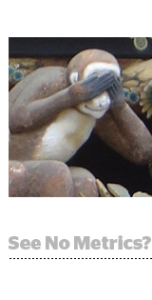 Media buyers and suppliers are now authorized to transact on viewable impressions, but how many are even using this form of tracking?
Media buyers and suppliers are now authorized to transact on viewable impressions, but how many are even using this form of tracking?
To measure the adoption of viewability tracking and other forms of verification among national and global advertisers, AdExchanger recently worked with ad analytics firm Moat.
We supplied Moat with a list of 100 large online advertisers (a modified version of the Fortune 100, weighted to emphasize large digital marketers). Moat then used its crawler-based technology to determine how often those brands’ ad tags are served alongside tags from any of four ad verification vendors known for tracking viewable impressions: Integral Ad Science, DoubleVerify, comScore and Google-owned Adometry. (Moat also provides viewability metrics, but its solution was excluded from this analysis.)
Here’s what Moat found:
From 2013 to the first half of 2014, when the Media Ratings Council lifted its advisory warning against transacting on viewability, Moat observed a doubling of the number of advertisers running ad verification tags on at least half of their ad impressions, from 15% to 30%. Likewise, the number of advertisers running those ad tags on at least a quarter of their impressions also approximately doubled, from 32% in full-year 2013 to 60% in the first half of 2014.
So according to this experiment, a majority of major advertisers are verifying ads on at least some of their impressions. That’s not too shabby, from an adoption standpoint.
But it’s also not yet widespread. The four vendors profiled are prominent in the ad verification market. Given that fewer than one-third of advertisers on the AdExchanger list were observed to work with one of them on a majority of ad placements, full adoption of viewability measurement may be many months or years away.
Methodology: Moat.com crawls about 10,000 sites a day, and visits each of those sites a few hundred times a day, to build its index of digital advertising practices in the US and UK. The four providers of viewability metrics tracked for this analysis also provide other services such as fraud measurement, ad verification and brand safety tracking that are not within the scope of this research exercise. Therefore it’s possible that of the 60% of advertisers observed to be working with vendors such as DoubleVerify and comScore, not all are measuring viewability exclusively with those firms.
“Most of the tags do more than just viewability but I know from our interactions with marketers, viewability is the first thing everyone talks about,” said Moat CEO Jonah Goodhart. “Fraud detection has also become very popular recently,” a trend he said expects to continue.











